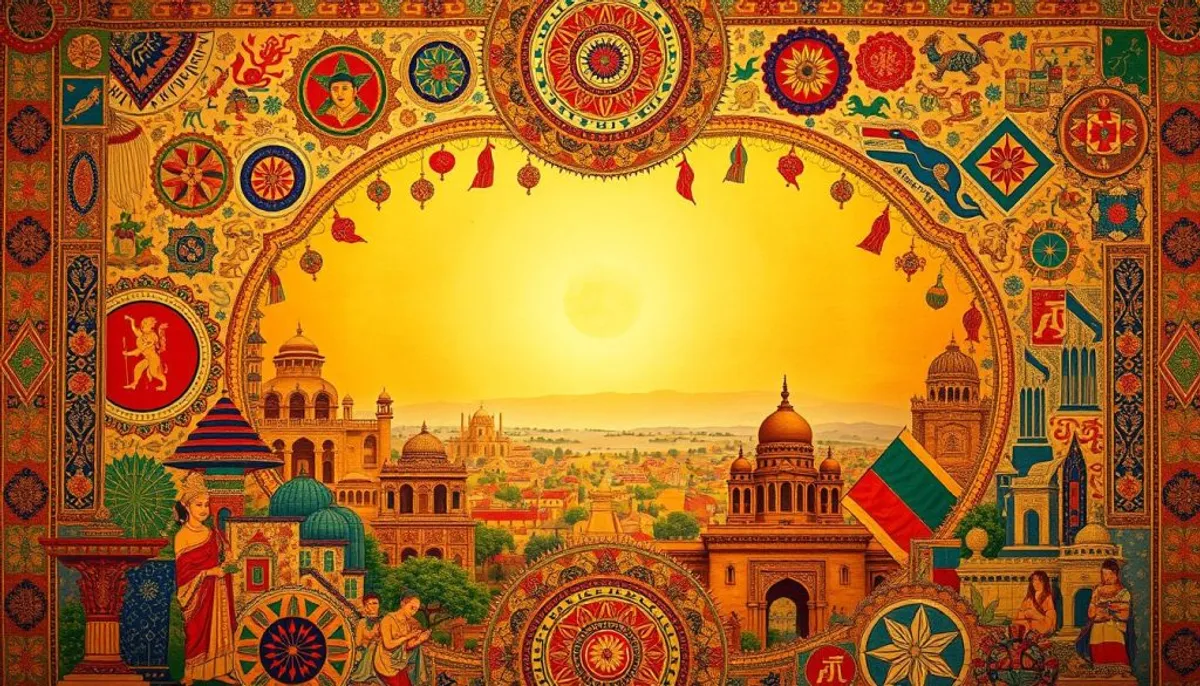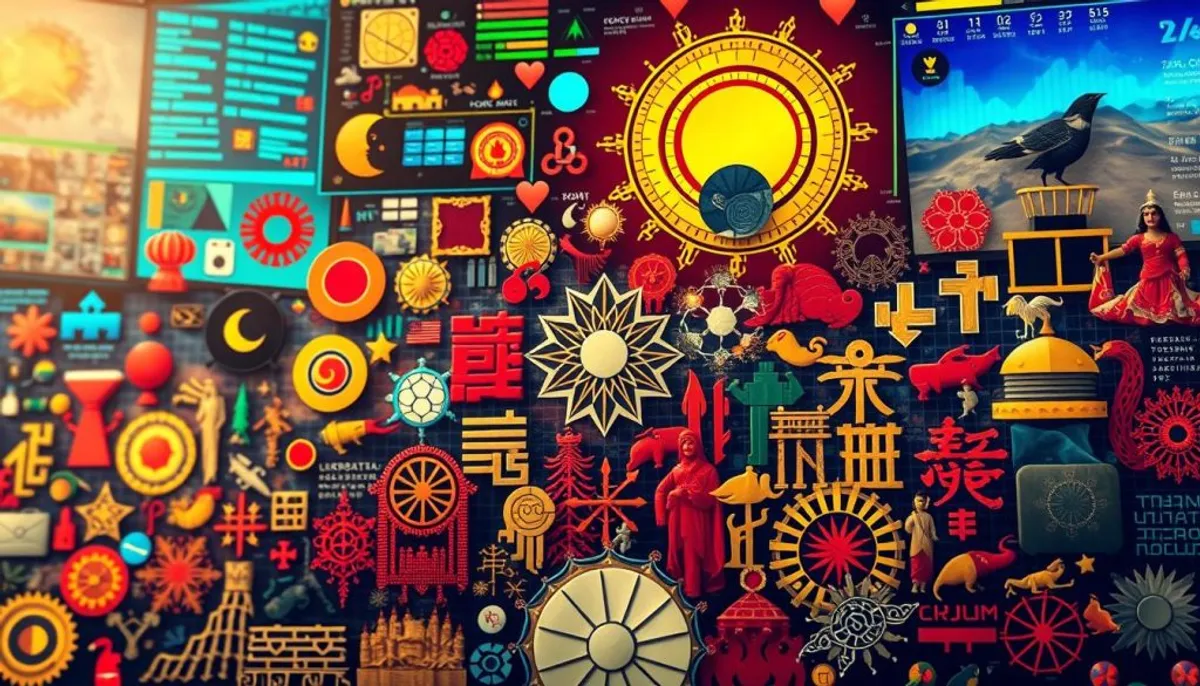In our interconnected world, cultural influences blend and transform. They create a landscape rich in diversity. Globalization has paved the way for many intercultural encounters. These shape our society in a unique way.

The areas where these influences manifest are varied. From art to gastronomy, through fashion and social practices, every sphere of our daily lives is affected. This convergence raises questions about the preservation of unique cultural identities in the face of growing uniformity.
The European Commission's study on cultural values reveals a positive perception of culture in 27 countries. It is seen as a vector for personal enrichment, despite certain barriers to access. New technologies, particularly the Internet, play a crucial role in the dissemination and cultural exchange.
Thus, exploring the areas of cultural convergence allows us to better understand how these influences shape our collective experience, including the importance of cultural adaptation. They enrich our modern society.
Cultural Convergence in the Digital Age
The digital age has radically transformed the interaction and blending of cultures. New technologies accelerate the fusion of traditions and cultural mixing. They facilitate global exchanges, making cultural interaction more accessible.
The Role of Digital Media in Cultural Dissemination
Digital media have revolutionized cultural dissemination. In France, the adoption of technologies has been rapid. 75% of the population is connected to the Internet in just 10 years. This connectivity has allowed for an unprecedented flow of ideas and cultural practices.
It contributes to the preservation and evolution of intangible heritage. Technologies have opened new avenues for cultural dissemination.
The Impact of Social Platforms on Cultural Exchanges
Social networks have created virtual spaces for cultural exchanges. This phenomenon is particularly visible among young people. Their cultural practice has intensified with multitasking.
For example, the rise of K-pop in France shows a growing cosmopolitanization of youth cultures. This trend does not rely on a historical link with Korea.
The Democratization of Cultural Production
The digital age has democratized cultural production. Phenomena like Harry Potter embody this convergence across different media. However, this democratization raises questions about the preservation of the unique intangible heritage of each culture.
Cultural convergence in the digital age offers new opportunities for cultural mixing. However, it poses challenges for the preservation of local traditions in an increasingly connected world.
In Which Areas Do Cultural Influences Intermingle?
Cultural exchanges manifest in various aspects of our lives. Acculturation, where cultural elements exchange, is particularly visible in certain essential sectors.
The Arts and Creative Expression
Art plays a crucial role in intercultural dialogue. Persian miniatures illustrate the influence of Persian culture on Islamic art. They tell myths and historical stories, merging diverse artistic traditions.
Gastronomy and Culinary Traditions
Cuisine is a fertile ground for cultural influences. In Sicily, the cuisine results from the union of Roman, Byzantine, and Arab traditions. This fusion reflects the island's rich history of cultural exchanges.
Fashion and Clothing Trends
Clothing styles cross borders. The Persian influence on Mughal fashion in India is a striking example of acculturation in fashion.
Social Practices and Lifestyles
Cultural influences shape our lifestyles. In Mughal India, Persian becomes the language of administration and high culture. This shows the profound impact of cultural exchanges on society.
| Domain | Example of Cultural Influence | Impact |
|---|---|---|
| Architecture | Persian influence on Mughal architecture | Use of Iwan, Charbagh gardens, and pishtaq |
| Literature | Poetry of Rumi | Impact on Islamic and Western literature |
| Art | Persian miniatures | Integration into Islamic art |
| Language | Persian in Mughal India | Language of administration and high culture |

These examples demonstrate the richness of cultural exchanges and their lasting impact on our societies. The intercultural dialogue continues to shape our world, creating new forms of expression and mutual understanding.
Standardization and Cultural Homogenization
Capitalist globalization has spawned a global culture, becoming the primary export of the United States. This trend raises concerns about possible cultural homogenization, often represented by the “McDonald’s” consumer. The cultural syncretism takes on full meaning here, showing how cultures blend in various fields.
The Effects of Globalization on Local Cultures
The massive dissemination of audiovisual content, with an average consumption of 43 hours per week, shows the impact of media on local cultures. This American cultural omnipresence is seen as a means to propagate a consumer society model on a global scale.
Resistance to Cultural Uniformity
Resistance movements are emerging in response to this trend. In Europe, measures to protect cultural industries have been adopted, such as subsidizing cinema. However, these efforts are sometimes threatened by pressures for free trade, as seen in 1993 with the abolition of certain protections.
The Emergence of New Hybrid Forms of Expression
Cultural syncretism is also manifesting in social networks. For example, the Louvre has 4.9 million followers on Instagram, while cultural content creators have 1.2 million followers. These platforms are becoming places where cultures mix, creating unique expressions that reflect both the local and the global.
| Platform | Number of Followers |
|---|---|
| Louvre Instagram | 4.9 million |
| BnF Instagram | 111,000 |
| La Minute Culture | 152,000 |

This dynamic shows how cultural syncretism operates in various fields. It creates a rich and complex cultural landscape, where local traditions and global influences coexist and enrich each other.
The Mechanisms of Cultural Transmission and Adaptation
Cultural transmission and adaptation are essential to global cultural diversity. These complex processes shape our societies through intercultural encounters and the fusion of traditions. The study of these mechanisms reveals the dynamic nature of our cultural heritage.
International exchange programs provide fertile ground for observing these phenomena. Although difficult to quantify, these experiences are key elements in the personal history of participants. Analyzing critical situations allows for a better understanding of these complex interactions.
Cultural transmission occurs at multiple levels: individual, group, institutional, and societal. This multiplicity creates a wealth of interpretations and highlights the complexity of intercultural encounters. The distinction between cultures and adaptation strategies is crucial to avoid misunderstandings.
Cultural adaptation, for its part, manifests in various areas:
- The arts and creative expression
- Gastronomy and culinary traditions
- Fashion and clothing trends
- Social practices and lifestyles
These areas illustrate how cultures mutually influence each other, creating new forms of hybrid expression. This ongoing process of cultural transmission and adaptation enriches our world while posing challenges for the preservation of cultural diversity.
Conclusion
Exploring cultural influences reveals a world in perpetual transformation. Cultural mixing, a source of infinite creativity, unfolds in art, gastronomy, and fashion. This phenomenon, accelerated by the digital age, revolutionizes how we communicate and share our traditions.
The statistics are telling: 100,000 students in French schools abroad, 98 French Institutes, and 800 Alliances françaises illustrate France's commitment to intercultural dialogue. These institutions are essential for the preservation and dissemination of French intangible heritage. They also promote cultural exchanges.
Globalization raises the challenge of balancing openness to external influences and the protection of cultural identity. The case of patient Mr. K, who speaks only English in a French hospital, highlights the daily challenges of cultural mixing. It emphasizes the importance of adapting our practices for effective intercultural dialogue, even in vital areas like health.
In summary, cultural mixing enriches our society, stimulates innovation, and strengthens mutual understanding. It encourages us to celebrate our diversity and build bridges between cultures. Thus, we can create a more open and creative world.
RelatedRelated articles


